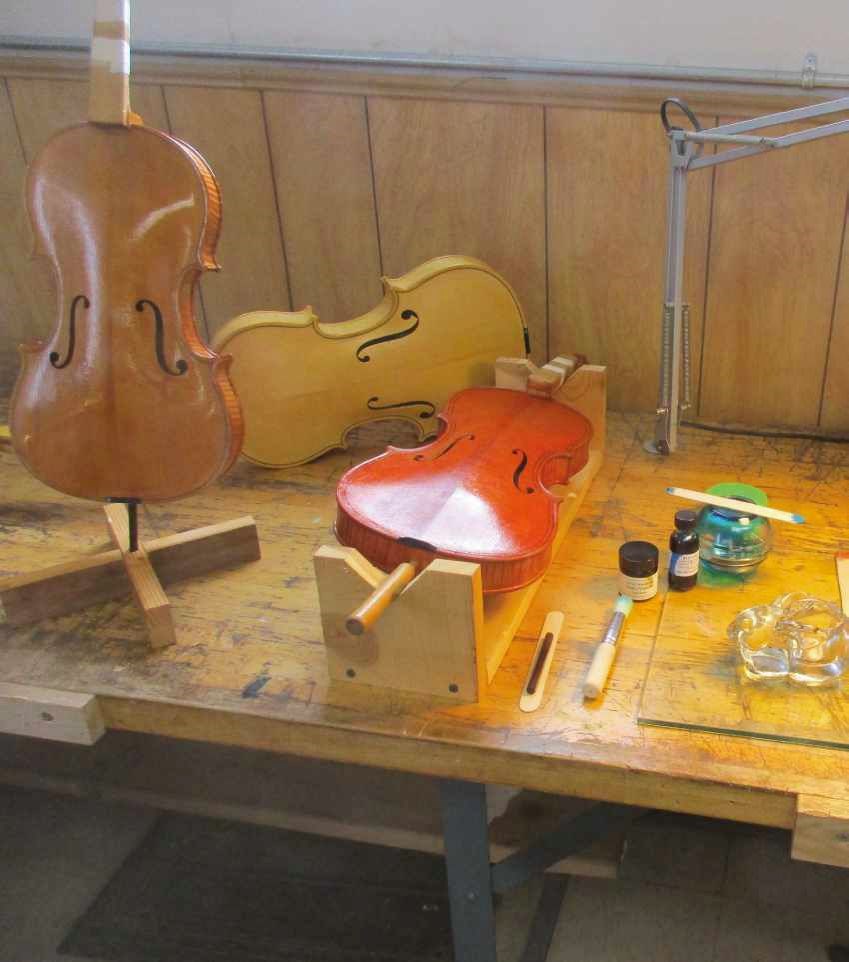
Instruments from luthier Korinthia Klein’s Tempo Series - white violins and violas that she buys before varnishing by hand
COURTESY KORINTHIA KLEIN
A young violinist visits the workshop of a local maker after hearing good things about her instruments. He likes what he sees, and tries out a few violins, but they’re beyond what he can afford. He’s about to leave disappointed when the maker brings out another instrument, a violin that she recently bought in the white, and has since varnished and set up in her workshop. The violin has the same high-quality finish and professional set-up as her handmade instruments, and to the player it looks good, sounds good, and crucially is within his price range.
This scenario has the potential to end in a sale, but the player should understand exactly what he is purchasing – how much of the violin is the maker’s work, and how much is the work of someone else. The maker can communicate this face to face, and back it up with clear documentation and a certificate, together with a carefully worded label that, while probably including the maker’s name in a description such as ‘Workshop of…’ or ‘Varnished by…’, clearly differentiates the instrument from the maker’s own instruments – to avoid confusion both immediately and in the future, when the player might sell the violin on.